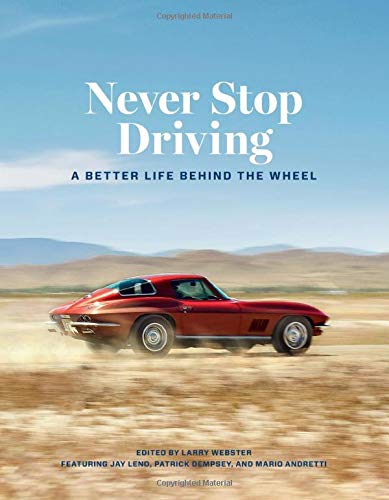
Companion to Squeezed Up – The Book
80 Minutes full-feature film
Filmed by: Dirk “The Pixeleye” Behlau
Executive Producer: Stefan Immke, Co-Producer: Shane Bagnall
Director of Photography: Dirk Behlau
Narrated by: Jessica Behlau
Edited by: Dirk Behlau
Language: English
Soundmix by: Thomas Geiger
Starring: “The Wild Bunch“
Stefan Immke, Matze Heiden, Thorsten Liesenberg, Andy Schmidt & Shane Bagnall
also starring in no particular order:
Robert Williams, Brian Bent, Tiki Tony, Dave Warshaw, Bamboo Ben, Fip Buchanan, Jay Dean, Jason Lee, Bobby Green, Shige, Matt “Tikiman” Willis, Marie Devilreux, Wild Tiger Woman, Spike Marble, Joe Arreguin, Adrian Eustaquio, David Arnson, Crazy Al, Michael Grider, Billy Shire, Dottie Deville & many more
Music by The Insect Surfers, Jason Lee, Brian Bent & The Hula Girls
DVD and Blu-Ray – two discs with the same movie! Codefree
Squeezed Up the Book HERE
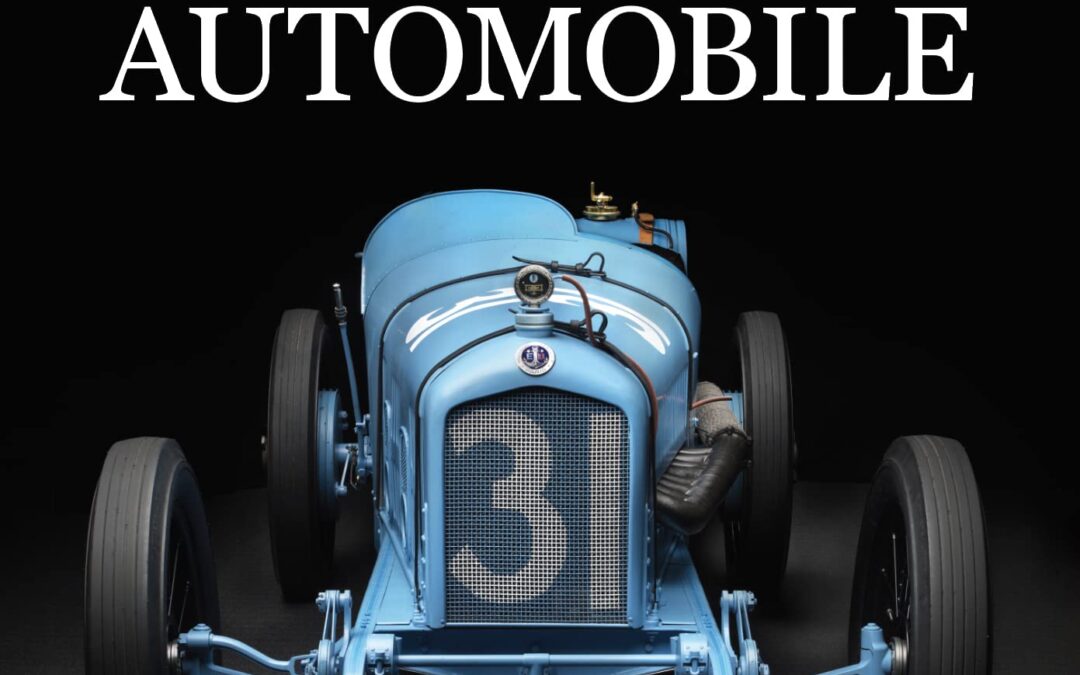
In the last one hundred years, cars have shaped our lives. Other everyday cultural artifacts, such as watches, telephones, musical instruments, and televisions, have certainly had influence, but the car is by far the most significant. Now, change is coming for the car, as it is for so many other industrial artifacts. Once, cars were distinct machines. Now, they are evolving into multifunctional digital devices. New fuels, new modes of travel, and new technologies are disrupting the traditional role of the much-loved family car.
What is to become of this material legacy? Should we really let go of it? Without memory, personal and shared, we lose our way, our individuality, and our culture. This proposition is at the heart of The Archaeological Automobile.
Miles C. Collier’s landmark approach uses an “archaeological mindset” to interpret the automobile as a cultural artifact in six themes:
The Development of the Automobile describes how the car emerged from a pressing human need for mobility, tracing our relationship with horses, our invention of the bicycle, and how we turned our backs on both as daily transport for the allure of the car.
The Rise of the Collectible Automobile asks how and why ratty relics decaying in recycling yards can become valuable and treasured collectibles. It reveals the effect of cultural influences on our perception of cars and on the dynamics of the collector car market.
The Archaeological Mindset picks up a wrench, gets into the workshop, and tracks the restoration of a 1919 Ballot Indy car using hands-on experience and background research while deploying the “archaeological imagination.” The archaeological clues are in the detail.
Collecting and the Archaeological Automobile deals with the characteristics of collecting. Why do we accumulate “stuff”? Is it greed? Is it passion? Is it a desire for legacy? And what makes a “good” collection? Is it bling? Is it style? Is it material worth? The answer lies in connoisseurship.
Restoring the Archaeological Automobile debates the merits of diverse restoration strategies and the reasoning behind them, including the tricky question of how to repaint the tilt-front nose of a 1964 Alfa Romeo GTZ racing car and still preserve the evidence of forty years of accumulated sandblasting and chipping.
The Archaeological Automobile of the Future is a call to action. Cars as we know them are customarily trashed, government regulations encourage indifference, and the skills and knowledge associated with fixing them are slowly vanishing as we lose older generations of experienced craftsmen. How can we preserve humanity’s treasure trove of automotive knowledge for generations to come?
Filled with engaging stories and practical examples, this is a handbook of the most thoughtful practices, not just for automobile owners and the historical car industry, but for collectors, professionals, and users of all kinds of industrial era artifacts.
The Archaeological Automobile combines scholarship, pertinent anecdotes, style, and experience to provide a stimulating account of why we should all be archaeologists now.
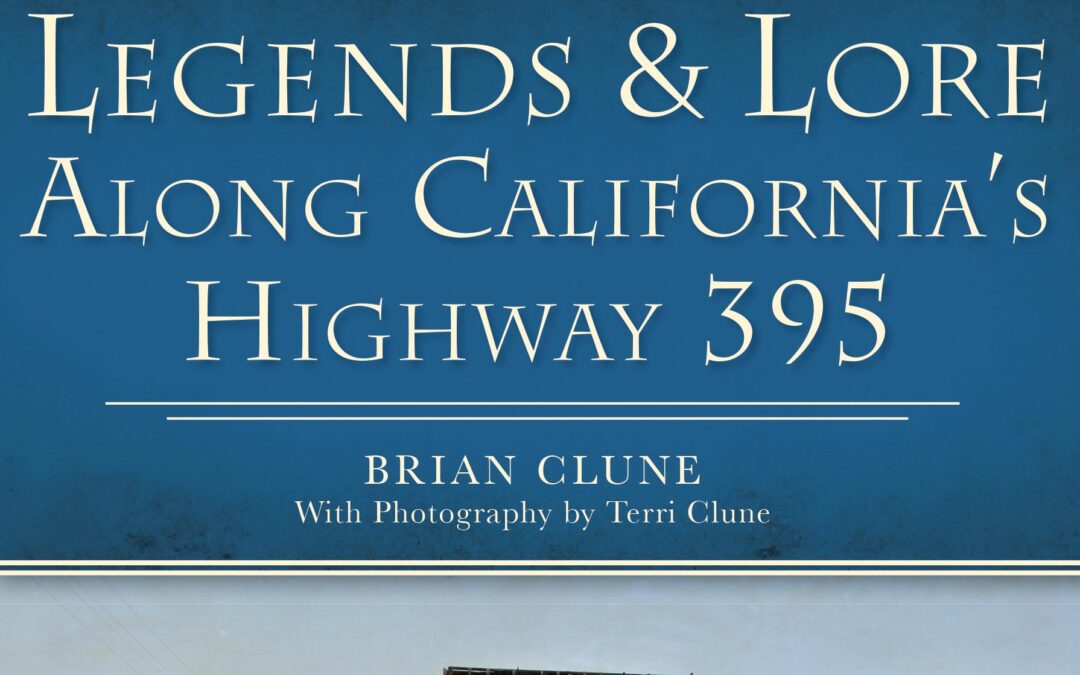
Stretching from Victorville to Carson City, Highway 395 offers a snapshot of California’s diverse landscapes and oddities. Tales of skinwalkers and Sasquatch sightings flourish among the bones of ghost towns, and stories of the elusive Lone Pine Mountain Devil ignite the curiosity. Far from fiction, the Sierra Phantom lived among the hills for fifty years, and mountaineer Norman Clyde used his skills to find lost hikers and climbers. Rumors of the Lost Cement Mine, with a rich vein of gold, lure people in, and the Tuttle Creek Ashram, built high above Lone Pine, offers peace. Author Brian Clune explores the strange and fascinating side of the majestic mountains and lonely deserts along US 395.
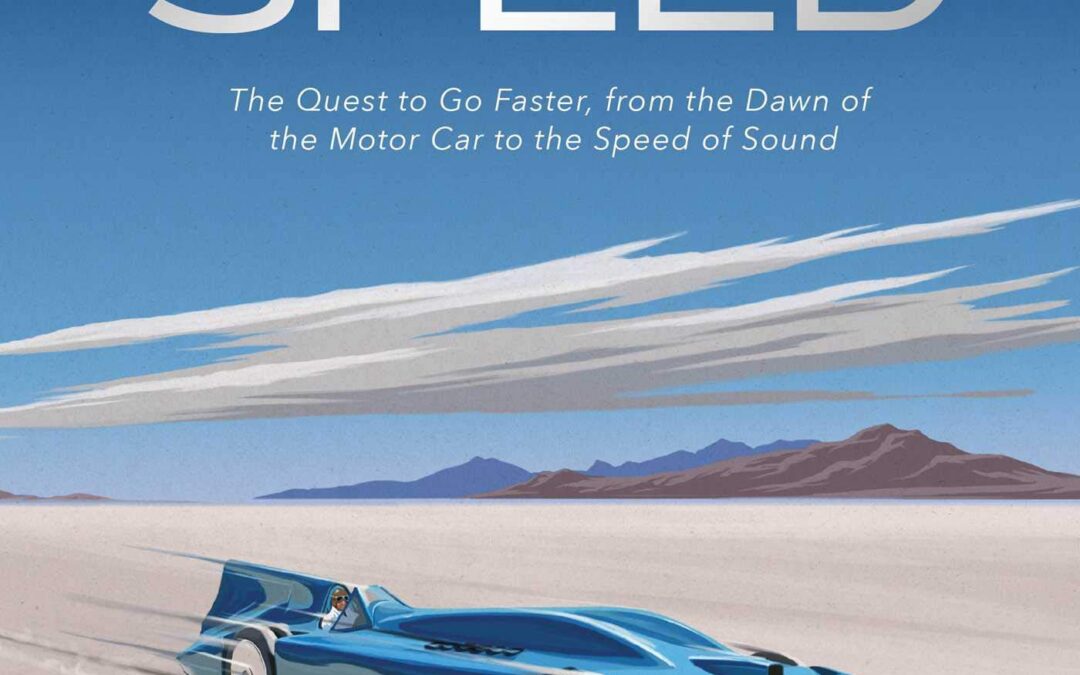
‘A special treat…The pictures and stories combine to provide a rich texture to telling the difficult story of why we chase speed like an addiction.’ Valerie Thompson, the world’s fastest female motorcycle racer
Ever since we built machines that could transport us, there has been a desire to find ways to make them go faster. For some, going faster isn’t enough – they want to be the fastest. This book celebrates those who have built the machines and driven them at ever greater speeds. This is The History of Speed.
Bestselling automotive writer Martin Roach tells the extraordinary story of those who have come to be obsessed by speed. From Camille Jenatzy, ‘the Red Devil’, who became the first man to drive at over 100kmh in 1899, through the golden age of Malcolm Campbell and his Bluebird, and on to the modern era of jet- and rocket-propelled cars, we have gone faster and faster. But this book is not just about these record-breakers, Roach also looks at the technology, the engines and the inventors who helped progress in speed at all levels, from Formula One to the supercars from the likes of Ferrari and Mercedes that are eagerly snapped up by collectors, rarely to be seen on the road.
Accompanied by some of the most stunning images of the cars and those who made and drove them, Roach tells a wonderful story of innovation and invention. He talks to some of the great drivers to find out what inspires them to risk their lives, and finds out from engineers how they developed their ideas. Along the way, we hear some remarkable tales and anecdotes, but also find out how the pursuit of speed can also have its costs, with many tragic heroes and heroines falling along the way.
If you’ve ever thrilled to the roar of a sports car engine, or loved the feel of the g-force as you accelerate away, or even looked on in wonder at a powerful engine, The History of Speed is a book that you will not want to miss out on.

The Riders explores and celebrates the differences and common bonds among motorcyclists around the world via Henry von Wartenberg’s engaging and inviting documentary photography.
Motorcyclists feel a kinship with fellow riders that is not easily explained but runs deeper than choices like bike brand or riding focus. You see it sometimes with a wave of the hand from one lane to the next, with an appreciative nod at a stoplight, or in a U-turn to check on a rider stranded on the roadside.
Motorcyclists make a conscious decision to ride an inherently dangerous device, a machine open to the elements and vagaries of nature. A motorcycle demands a level of attention far greater than a car and consequences for inattention are much graver. On the flip side, riding a motorcycle offers an unmatched sense of freedom, adventure, and involvement.
Von Wartenberg, a long-time rider himself, has traveled the world on a variety of assignments, some motorcycle related and others not. But wherever he was on the planet, he always found a way to connect with fellow riders and document their culture and machines. Over the course of his travels he has photographed riders in more than 30 countries including Bolivia, Austria, Canada, Chile, China, Costa Rica, France, Mongolia, Mexico, Italy, Germany, Iceland, Peru, Spain, the United States, England, and Thailand to name a few.
What emerges on the pages of The Riders is the amazing breadth of the motorcycling world, from outlaw clubs to adventurers to racers to boulevard cruisers to those for whom a motorcycle is the only form of transportation as well a means to make a living.
The Riders is a book sure to be enjoyed by anyone who embraces the two-wheeled world.

This second of two volumes continues the P-38 story by focusing on the later, mass-produced models of this historic fighter—P-38J through P-38M. Each type is examined through carefully researched archival photos, as well as photographs of currently preserved examples. Known to the enemy during World War II as the “Fork-tailed devil,” the pilots of the Lockheed P-38 Lightning were charged with the responsibility of escorting American bombers deep over heavily defended Europe during the early years of the air campaign against Nazi Germany. In the Pacific, the Lightning’s long range was put to good use flying over vast expanses of ocean. Detailed text and captions illustrate not only the design and construction of the later-war Lightnings, but also their combat use in WWII. Large, clear photos, coupled with descriptive and informative captions, put the reader on the airfield and in the sky with this historic aircraft.

This first of two volumes presents the P-38 story by focusing on the early models of this historic fighter—XP-38 through P-38H. Each type is examined through carefully researched archival photos, as well as photographs of currently preserved examples. Known to the enemy during World War II as the “Fork-tailed devil,” the Lockheed P-38 Lightning was piloted by those who were charged with the responsibility of escorting American bombers deep over heavily defended Europe during the early years of the air campaign against Nazi Germany. Detailed text and captions illustrate not only the design and construction of the early-war Lightnings, but also their combat use in WWII. Large, clear photos, coupled with descriptive and informative captions, put the reader on the airfield and in the sky with this historic aircraft. Part of the Legends of Warfare series.
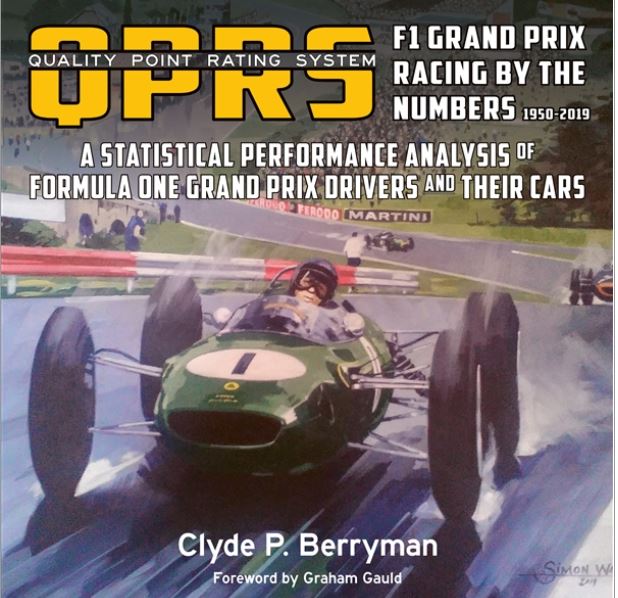
AVAILABLE APRIL 2021
WAS IT THE DRIVER, OR WAS IT THE CAR? That seems to be the age old, eternal question when motor racing enthusiasts gather to discuss the relative merits of Formula One Grand Prix drivers. Author Clyde Berryman devised a mathematical formula rating system, the Quality Point Rating System (QPRS), to objectively analyze and rate driver and car performances separately and came up with his own ranking system which was first featured in the July 1999 issue of F1 RACING Magazine.
This book is the updated and comprehensive QPRS study of Formula One Grand Prix racing drivers and cars from 1950 to 2019. It has an introductory section which discusses the principles behind the rating system and the major changes which have taken place over the evolution of F1, which often make direct comparisons quite difficult. Every chapter covers each decade with a short summary of the racing which took place, a QPRS ranking of the 10 best drivers and 10 best cars of the decade, and annual tables which provide the season calendar and the historical championship points, and the QPRS driver and car ratings for each year.
There are some all-time ranking tables and other pertinent analyses contained in summaries at the end of the book. In addition to maps of the many circuits used throughout F1 history, this massive 500-plus page volume features the exceptional artwork of some of the leading contemporary motor racing artists in the world.
- Hard cover with dust jacket
- 286 x 229mm (landscape)
- 528 pages
- More than 173 original art and 77 illustrated track maps
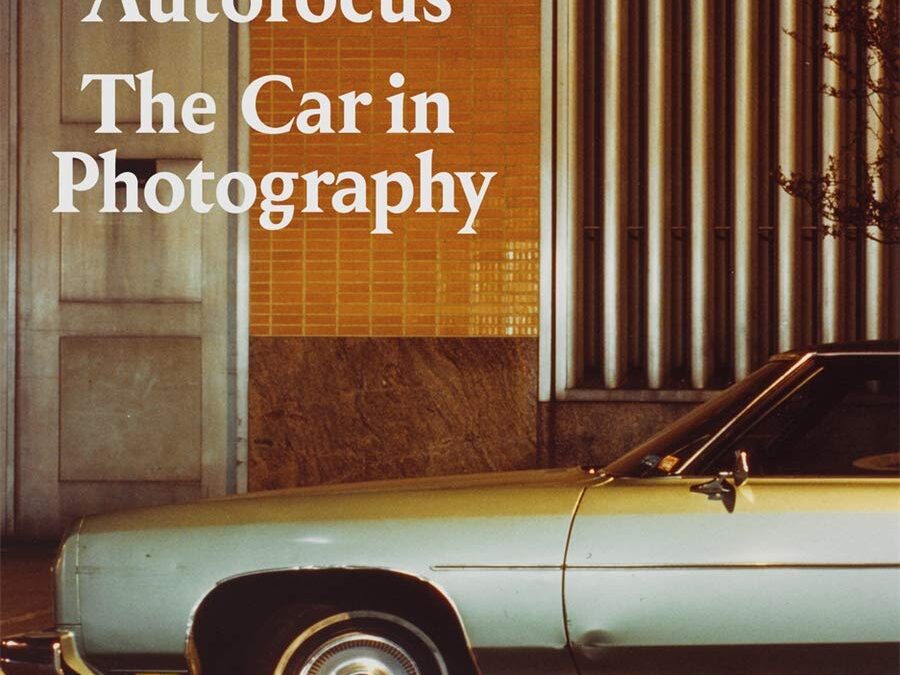
A historical tour in more than 100 images of the car as both subject and creative force in photography.
Undeniably one of the most influential innovations of the modern world, the car has changed not only the way we live, but also the way we look at the world around us. From formal, compositional device to highly desirable, photogenic object, the car has a long and enduring appeal in modern and contemporary photography as revealed in this latest addition to the V&A Photography Library.
Autofocus explores the deep cultural significance of the car in the history of photography, playing a role both as subject matter and as a genuine creative vehicle―the means by which photographers have accomplished many of their great works. Showcased is work by Henri Cartier-Bresson, Walker Evans, Robert Frank, Edward Weston, and Weegee.
This captivating album presents more than 100 photographs, alongside fascinating commentaries and an introduction, that span the early years of the automobile to the present day. For both photography and car-loving audiences, Autofocus illustrates the inexorable rise of the car as a cultural icon.
100 illustrations
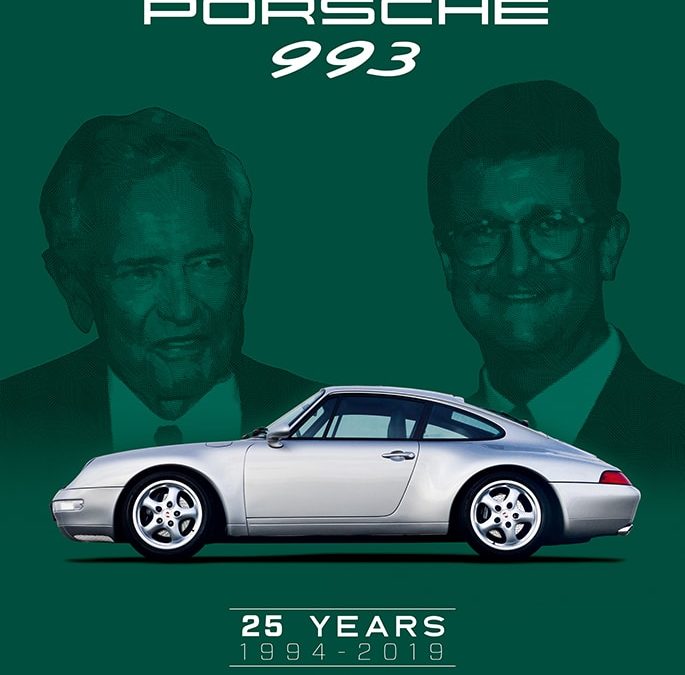
To celebrate the Porsche 993’s twenty fifth anniversary Berlin Motor Books published PORSCHE 993 “25 YEARS” 1994–2019 in a limited edition of 1998 copies.
The last air-cooled 911 really needed to be a success
During the development phase of the Porsche 993, the Zuffenhausen-based company was faring worse in economic terms than ever before. The Porsche 965 and Porsche 989 sports car projects had cost huge amounts of time and money without ever crossing the finish line. Porsche’s reserves were almost exhausted when the global economy tipped into recession in the early 1990s.
A small team created perhaps the most beautiful Porsche 911 ever
911 enthusiasts Bernd Kahnau (project manager) and Tony Hatter (design) were left to their own devices with a small team to realise their vision for the last classic Porsche 911. The result was the most beautiful and intriguing 911 ever. With the introduction of the 993, the production lines in Zuffenhausen were finally running at full capacity once again. On the occasion of the 25th anniversary of the Porsche 993, Tony Hatter and Bernd Kahnau have given extensive interviews, offering detailed insights into the development phase for the first time.
Special features in this book
- Detailed purchasing advice and price trends
- Extensive information about special models
- Unpublished photographs from the historic Porsche archive
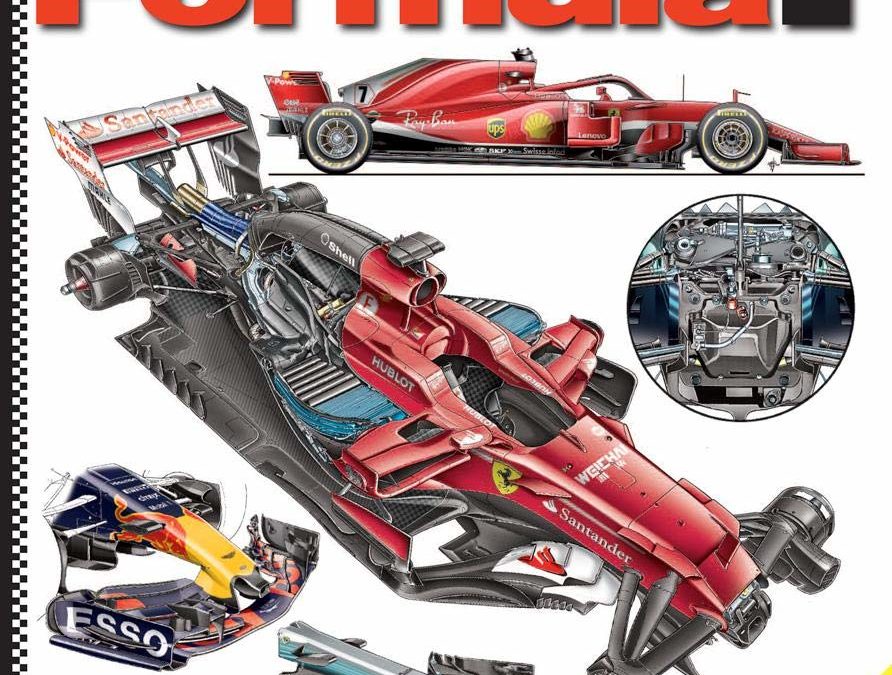
The last edition of an automotive literary classic: the technical analysis of Formula 1 penned by Giorgio Piola. After 25 years of publication, the historic draughtsman is bringing the curtain down on this experience with a volume that examines the last three seasons, from 2016 to 2018, as always reviewing the principal technical innovations in the spheres of chassis and engine design. This three-year analysis is appropriately completed with a retrospective of some of Piola’s most important drawings from a 50-year career that began back in 1969.
Formula 1 Technical Analysis is the only book of its kind that unveils all the technical secrets – even the most carefully hidden ones – of the Formula 1 World Championship cars. Engines, chassis, brakes, tires, this is an especially rigorous analysis of the car, but also their steering wheels and suspension. An essential for real Formula 1 enthusiasts for almost 30 years, this annual , this book also reviews in its second part the main new technical developments devised by the various teams during the covered seasons. The book is illustrated by more than 500 color technical designs, created by Piola himself.

SIGNED
When Ayrton Senna suddenly lost control of his Williams chassis during the Formula 1 Grand Prix at Italy’s Imola circuit in 1994, he careened into a retaining wall and a crash that killed him. Millions of grieving fans found the three-time world champion’s death incomprehensible, while many commentators began questioning a sport that could kill one of its greatest legends.
In response, the Fédération Internationale de l’Automobile launched an unprecedented campaign to make driver safety a priority, which soon led officials to consider the HANS Device, motor racing’s first head restraint.
In 2001, Championship Auto Racing Teams (CART) became the first to mandate the HANS and implement its use. When seven-time NASCAR Cup champion Dale Earnhardt crashed and died on the last lap of the Daytona 500 that same year, the problem of basal skull fractures finally came into sharp focus in the mainstream media. After years of trying to gain acceptance for their device, HANS inventor Dr. Robert Hubbard and business partner Jim Downing suddenly became overnight heroes.
CRASH! is the story behind the saga of the HANS Device. It touches every form of auto racing on the planet and several subjects close to all of us: political intrigue and struggle; scientific discovery; tragedy; triumph; and matters of conscience. There’s some romance and bromance, too. Above all, there’s a lot of racing and information that even the most die-hard fan will find new and compelling.
Hubbard and brother-in-law Downing eventually helped four of the world’s major auto racing series, including the Indy Racing League, resolve an epidemic of death that killed 12 drivers in a seven-year span, nine by basal skull fractures. Numerous others were being killed by the same injury in lesser known professional series as well as weekend warriors.
The 20-year struggle by Hubbard and Downing to gain universal acceptance for their life-saving device—now in use by over 275,000 competitors worldwide—is an amazing tale of family, genius, perseverance, tragedy and triumph. It tells how the world’s leading auto racing series shouldered the task of saving their driving heroes—and a sport.

British Scientific Intelligence 1939-1945
In this dramatic first-hand account of military intelligence triumphs, secretive detective work, and true-life espionage dramas, R.V. Jones reveals the true story of the vital role the scientific community played during World War II.
At 28 years old, Jones was summoned by Churchill to be a part of the clandestine British Scientific Intelligence community at Whitehall in London. From 1939 to 1945, Jones and his colleagues were tasked with coming up with countermeasures to German applications of science in the war. Projects he worked on during this “Wizard War,” as Churchill called their efforts, sought to find technical ways to combat Germany’s applications of science during the war, including newly developed navigational beams, chaff, and radar.
Jones was directly responsible for breaking Germany’s navigational beam system, which Luftwaffe bombers had been using to destroy British targets with devastating accuracy. This success with the “Battle of the Beams” proved critical in the outcome of the Battle of Britain. He also devised defenses against deadly German retaliation weapons such as the V-1 flying bomb and the V-2 rocket, as well as their nascent nuclear weaponry developments. His work with radar enabled the success of the Allied bomber offensive, played a key role in preparations for D-Day, and helped the Allies achieve ultimate victory.
This highly acclaimed memoir is a masterpiece of British military history. With abundant humor, humility, and details, Jones offers a riveting insider’s perspective on the scientific achievements and strategic decisions made during the Second World War

Once upon a time, there was a guy named Max Balchowsky who decided he wanted to beat Ferrari and Jaguar at their own game-road racing. The trouble was, he didn’t have the cash for a factory racer. So he built his own. Using a Ford homemade tube frame, a souped-up Buick V-8 and running on recapped whitewalls, Ol’ Yaller whipped them all.
Welcome to American Road Race Specials 1934-70. These were the glory days of road racing in the United States, from the first races between imported MGs to the world-winning Made-in-the-USA Scarabs and Chaparrals, and on toe the downfall of the Shadow.
This is the story of the men who built and ran their own homemade cars in pioneer SCCA and Cal Club races on town streets, airports and then the first purpose-built American racetracks. Here is Jim Hall, Lance Reventlow, Ken Miles, Carroll Shelby, Ak Miller, Balchowsky, Troutman and Barnes, Phil Hill, Dan Gurney, Roger Penske, George Follmer, and all the rest. . . .
And the cars: Ol’ Yaller, Cunningham, Scarab, Chaparral, Kurtis, Devin, Zerex Special, Bocar, Caballo de Hierro, Pooper, Shadow, Ferraris with Chevy V-8s and every other possible chassis-engine combination a racer could think of. Some were crude, others deceptively homespun; most were half hot rod, half sports car-all of them were unique and built with passion.
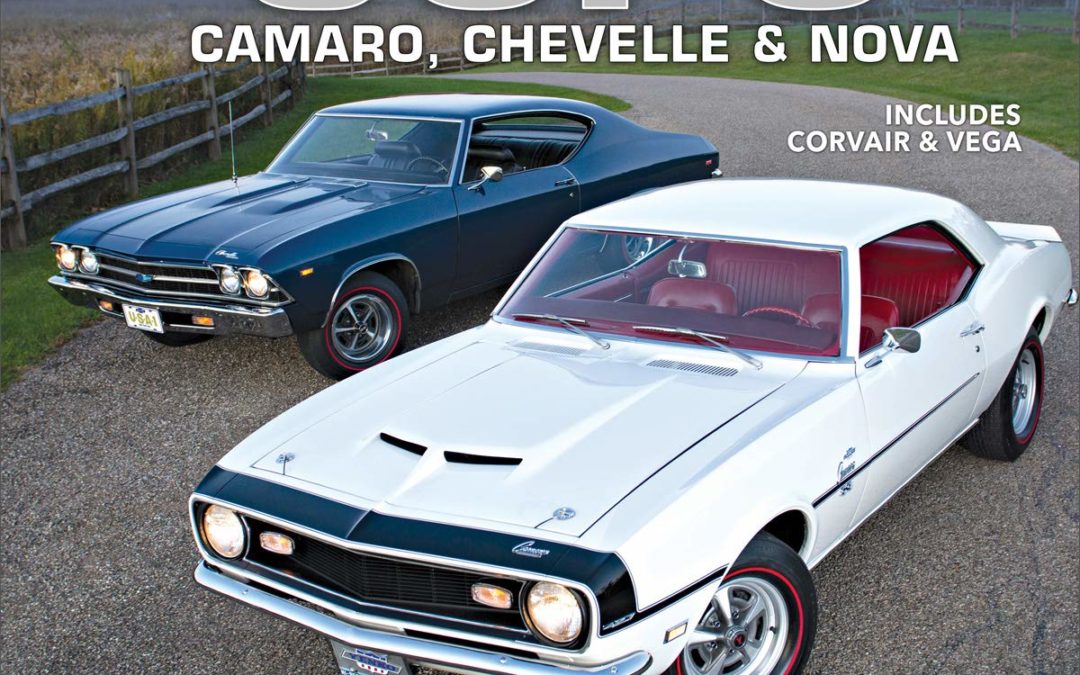
The COPO Camaros, Chevelles, and Novas of the 1960s and early 1970s were the ultimate high-performance GM muscle cars. While few knew about this back channel program at the time, it is now recognized as the origin of GM’s top muscle cars. Dedicated Chevy racers and car owners were determined to compete head-to-head with Mopar and Ford at the racetrack and on the street. But in order to do so, they needed to circumvent the corporate ban on racing and resolve the restriction of 400-ci engines in intermediate vehicles. Don Yenko and some other creative individuals recognized the loophole in the COPO (Central Office Production Order) system at General Motors. The COPO program was designated for fleet vehicles such as taxicabs, but at the peak of the muscle car wars it was used to build the ultimate high-performance Chevy muscle cars.
Some horrific on-track accidents compelled General Motors to drop out of racing, yet GM did not want to allow Chrysler and Ford to steal the glory on Sundays while they stood on the sidelines. As a result, GM inconspicuously ran the Chevy racing and high-performance program through back channels, and COPO was integral part of the program.
Don Yenko became the COPO muscle car program chief architect and champion. He ordered the Corvair through the COPO program and created the Corvair Stinger to mount a SCCA road race campaign. From these humble beginnings, the road map for creating the ultimate Camaros, Chevelles, and Novas was established. Factory Camaro V-8s came equipped with the 350 small-block or 396 big-block, which had to compete with the Mustang Cobra Jets and Mopar Wedge and Hemi cars. In response, building the big-block Camaro through the COPO program was devised. At the factory, Camaros were fitted with the 396 engines and shipped to dealers where the 427s were installed in the cars. From 1967 to 1969, the factory and dealers installed eight different 427 engines, including the all aluminum ZL1 427. Later on, others used the road map to build COPO Novas and Chevelles to similar spec, with similar results. The COPO performance car program did not end with these muscle cars. Yenko even ordered several hundred Vegas through the COPO program, so they could be fitted with turbochargers and raced in SCCA competition.
Chevy muscle car aficionado and author Matt Avery retraces the history of the COPO program and the creation of these premier muscle cars. He has scoured archives and tracked down owners and personnel involved in the program to deliver a comprehensive story and complete guide to the COPO cars. The COPO muscle car and racing program produced a storied and remarkable journey, and author Matt Avery captures all these facets in this entertaining and revealing history.
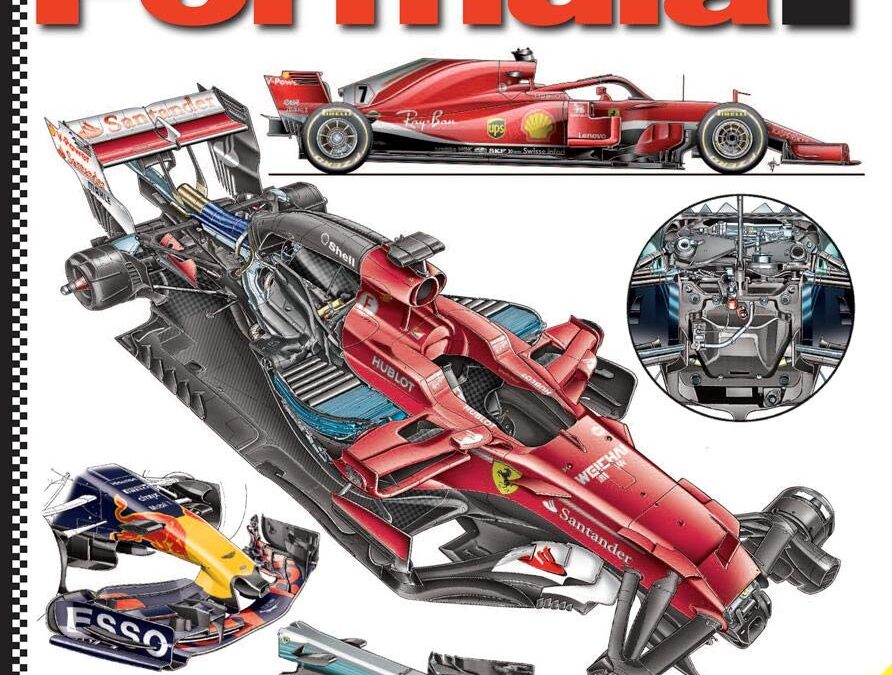
The last edition of an automotive literary classic: the technical analysis of Formula 1 penned by Giorgio Piola. After 25 years of publication, the historic draughtsman is bringing the curtain down on this experience with a volume that examines the last three seasons, from 2016 to 2018, as always reviewing the principal technical innovations in the spheres of chassis and engine design. This three-year analysis is appropriately completed with a retrospective of some of Piola’s most important drawings from a 50-year career that began back in 1969.
Formula 1 Technical Analysis is the only book of its kind that unveils all the technical secrets – even the most carefully hidden ones – of the Formula 1 World Championship cars. Engines, chassis, brakes, tires, this is an especially rigorous analysis of the car, but also their steering wheels and suspension. An essential for real Formula 1 enthusiasts for almost 30 years, this annual , this book also reviews in its second part the main new technical developments devised by the various teams during the covered seasons. The book is illustrated by more than 500 color technical designs, created by Piola himself.

Filling a void in major works about rare and exotic flight test aircraft, this book is the definitive work on the converted bombers and transports that served as the critically important launch vehicles to the headline-grabbing X-Planes. Covered are scores of aircraft of all types converted for use as “flying laboratories” to test engines, wings, cockpits, and aerodynamic devices all in the name of aviation progress. Also included are the “parasite” aircraft carried aloft to be launched and recovered by their motherships.
With 204 pages and 12 detailed chapters in this book, it thoroughly covers every aspect of mothership, testbed, and parasite aircraft. Also featured are detailed appendices containing extensive reference material for modelers, historians, and enthusiasts, including a complete listing of known engine testbeds; a complete listing of known airframe mods and systems-test aircraft; and all combinations of U.S. and foreign motherships and parasite-carrying aircraft.
Aviation history is filled with legendary aircraft, but in many cases, the design and development of these brilliant machines were dependent on significant inflight testing of new engines, advanced airframe structures, and the latest in flight control and flight-related systems. The availability of already-flying airframes that could be modified easily for specific airborne test work saved years of engineering time, not to mention the lives of countless test pilots who did not have to face airborne risks of the unknown.
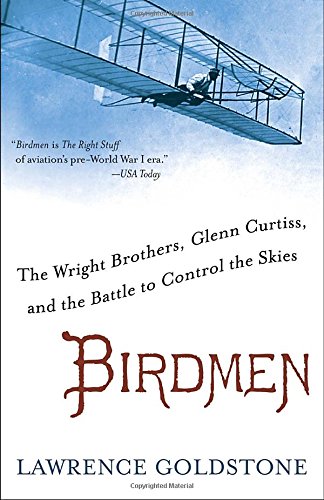
The feud between this nation’s great air pioneers, the Wright brothers and Glenn Curtiss, was a collision of unyielding and profoundly American personalities. On one side, a pair of tenacious siblings who together had solved the centuries-old riddle of powered, heavier-than-air flight. On the other, an audacious motorcycle racer whose innovative aircraft became synonymous in the public mind with death-defying stunts. For more than a decade, they battled each other in court, at air shows, and in the newspapers. The outcome of this contest of wills would shape the course of aviation history—and take a fearsome toll on the men involved.
Birdmen sets the engrossing story of the Wrights’ war with Curtiss against the thrilling backdrop of the early years of manned flight, and is rich with period detail and larger-than-life personalities: Thomas Scott Baldwin, or “Cap’t Tom” as he styled himself, who invented the parachute and almost convinced the world that balloons were the future of aviation; John Moisant, the dapper daredevil who took to the skies after three failed attempts to overthrow the government of El Salvador, then quickly emerged as a celebrity flyer; and Harriet Quimby, the statuesque silent-film beauty who became the first woman to fly across the English Channel. And then there is Lincoln Beachey, perhaps the greatest aviator who ever lived, who dazzled crowds with an array of trademark twists and dives—and best embodied the romance with death that fueled so many of aviation’s earliest heroes.
A dramatic story of unimaginable bravery in the air and brutal competition on the ground, Birdmen is at once a thrill ride through flight’s wild early years and a surprising look at the personal clash that fueled America’s race to the skies.
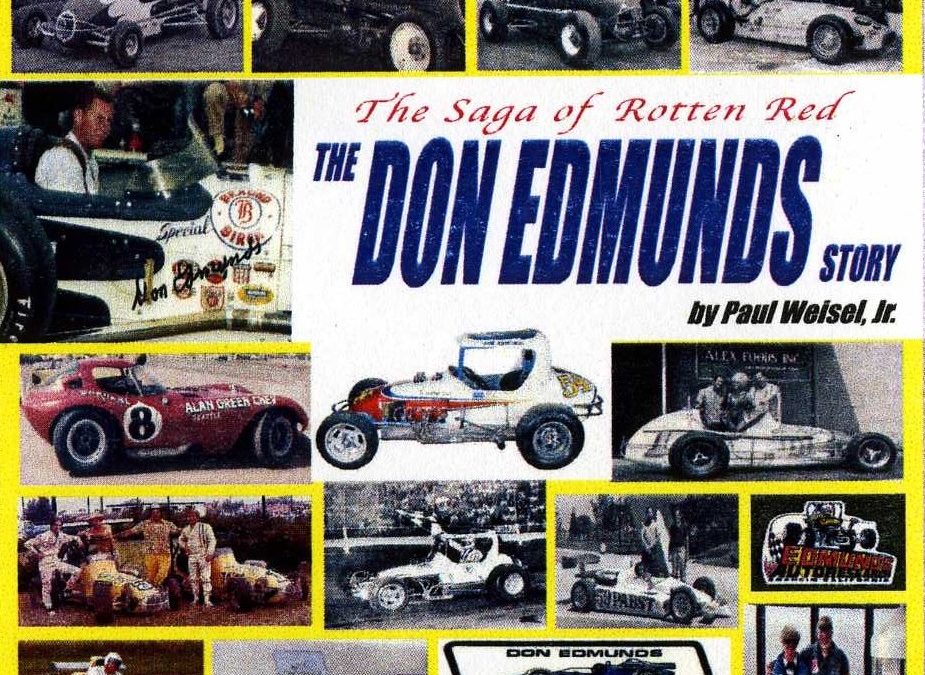
Many people remember Don Edmunds as the premier builder of open wheel race cars during the 1960s, 1970s, and into the early 1980s, but the Don Edmunds story isn’t just about iconic midgets and sprint cars. Don was a true innovator, whose cars combined art and performance and were always at the forefront of open cockpit safety and design, but few readers realize Don Edmunds touched so many parts of the racing world and beyond. Author, Paul Weisel, Jr., has partnered with Don to tell the Edmunds story in a new 182-page book, complete with more than 200 photos, titled, ‘The Saga of Rotten Red – The Don Edmunds Story’.
From his childhood in Anaheim, CA, his teenage years as a part of the southern California roadster scene, including appearances at El Mirage and Bonneville, his first oval track exposure racing jalopies with the California Jalopy Assn., to his graduation to the midgets of the United Racing Assn., the book chronicles Edmunds’ journey toward his greatest racing triumph, qualifying for the 1957 Indianapolis ‘500’ and subsequently being named ‘Rookie of the Year’ at Indy. Along the way Don learned the ropes from car owner, Doug Caruthers, paid attention to tips by drivers, Billy Cantrell, Edgar Elder, and others, worked with Eddie Kuzma, fabricating race cars for Indy and the championship trail, and had his moniker of ‘Red’ transformed forever to ‘Rotten Red’, a tag he has always embraced. Even today, Don signs all his e-mails with ‘RR’. Don types the letters with a grin and all his friends smile when they read to the end of the message.
After Indianapolis 1959 Don retired from driving championship cars and returned to Anaheim to enjoy married life and to pursue his plans to eventually open his own race car shop. Stints with Bill Devin, Bill Stroppe, and Bill Thomas culminated with Don’s design and fabrication of the prototype of the Cheetah sports car and gave Don the practical experience he needed to open Don Edmunds’ Autoresearch in 1964.
Three separate shots at Indianapolis as a car builder and literally hundreds of midgets, sprint cars, supermodifieds, and super vees later, Don Edmunds replaced Frank Kurtis as the country’s most prolific designer and builder of open wheel race cars. Don Edmunds was on the cutting edge of open wheel race car design and later enjoyed a superb career driving supermodifieds, including a junket to compete with cars of his own design in South Africa. In 1991, Don Edmunds was inducted into the National Sprint Car Hall of Fame and in 1994, the National Midget Hall of Fame, two awards he holds in the highest regard.
Away from the track Autoresearch designed and built Evel Knievel’s X-1 Skycycle, the prototype vehicle the stuntman would use to jump the Snake River Canyon in Idaho. Don also became involved in the restoration of several significant 1930-era race cars and used his ‘retirement’ to produce dozens of stunning scale model race cars. Author Paul Weisel takes the reader on all of Edmunds’ adventures and provides insight into the thought process of one of the true ‘dreamers of the day’.













